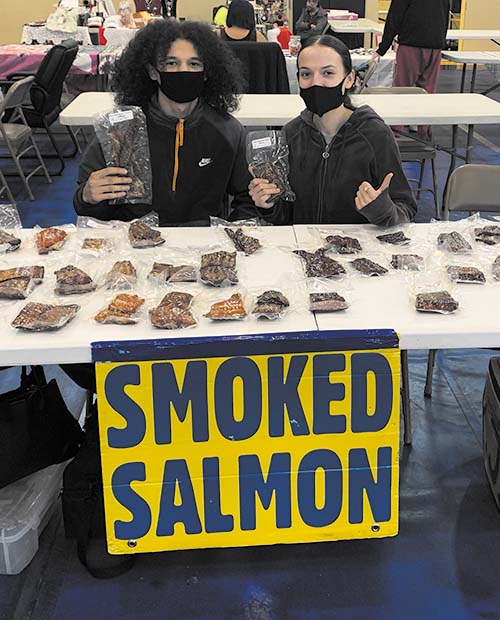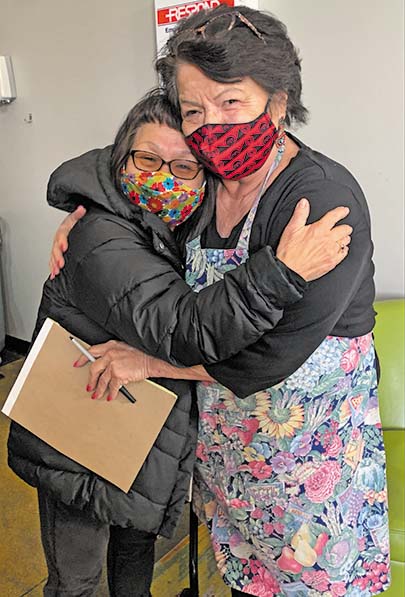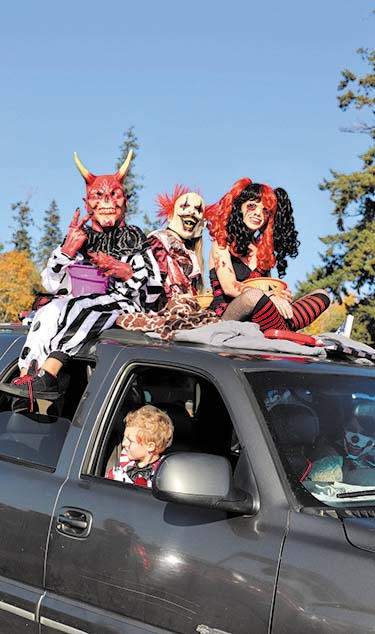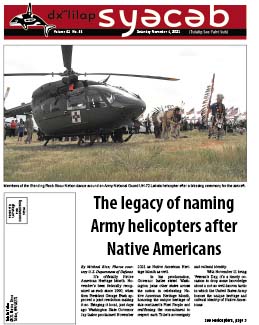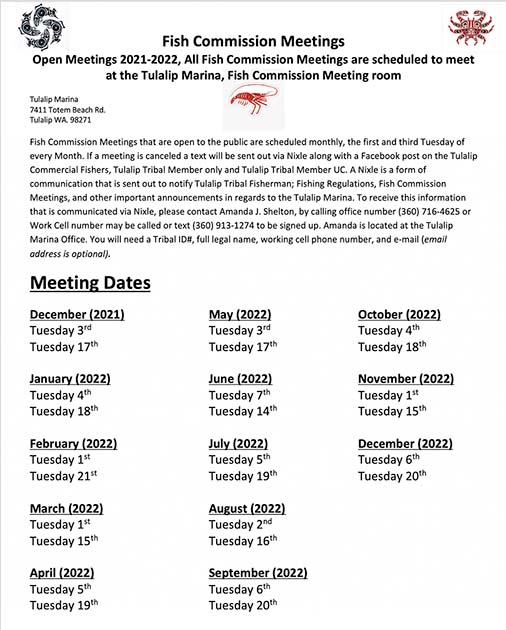
Category: Tulalip News
Tulalip Tribes Planning Commission Notice of Public Hearing
“This was one of the most successful Bazaars yet!”
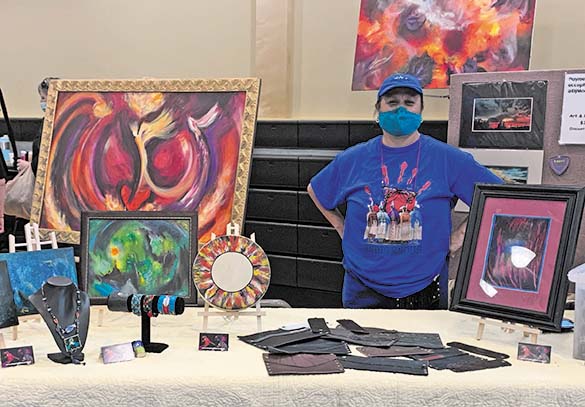
By Shaelyn Hood, Tulalip News
Following last year’s Covid-19 cancellation of the Native Bazaar, many people were eager to see what this year’s Bazaar had to show. Many artists used the event as a time to hone in on their craft and create beautiful pieces for the sale. With over 49 vendors signed up, volunteer organizer, Tammy Taylor, knew this year was going to bring a lot of surprises.
The Bazaar started on Friday November 12 and continued through Sunday November 14. Vendors had a variety of items from, cedar hats/headbands, quilts, acrylic paintings, beaded jewelry, Christmas ornaments, knitted hats, smoked salmon, handmade drums and rattles, and much more. The event drew in such a large crowd that some vendors had sold out by Friday and Saturday. In their attempts to continue selling, vendors went as far as making new pieces overnight to bring the next day.
Monie Ordonia, a painter and vendor at the event, talked about her experience, “Everyone must have really missed this, we’ve had a lot of foot traffic. It makes me happy to get people excited about art; when they get into the wondering ‘awe’ state, where they want to take it home with them. I take that feeling with me.”
As we all know, COVID-19 caused a lot of disruptions for gatherings and the Native Bazaar became one of the first major events where the community could come together again. And for many, that was the most important thing.

“I usually travel with my family to different elders’ luncheons, it’s nice to be able to come back here and be with the community,” said vendor, Tammy Yelm
For another vendor, Lisa James-Rodriguez, this was her first year at the Native Bazaar, “I’ve been crafting for six years; art has really become my therapy. During quarantine, it helped keep my sanity, I got to explore new crafts and styles, and the art just speaks to me. Art is a feeling.”
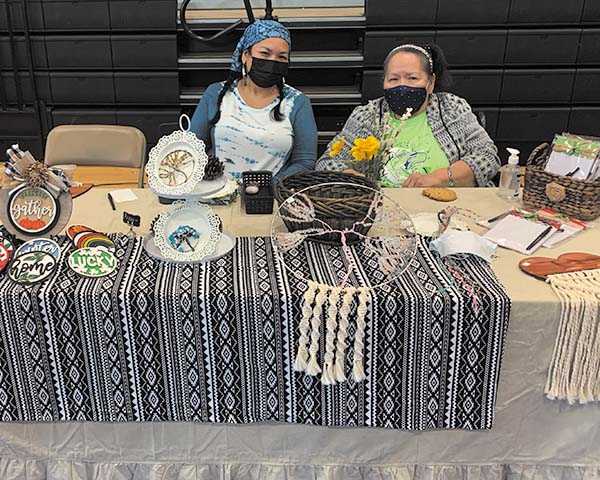
Art can be such a fun and emotional process for a lot of artists, and in many ways, they are exposing themselves. The Tulalip community really came together and showed their support for the event and for these artists. Tammy Taylor was extremely happy, “This was one of the most successful Native Bazaars yet! We were all surprised at the turnout. Thank you to the Tulalip Community for coming out and supporting your local Tulalip artists.”
She also gave a shout out to the maintenance team, “Barry Davis, Don and their group, they helped set up everything in two hours. Every year they are so gracious and help with cleaning up and supporting our events. They help everything run so smoothly.”
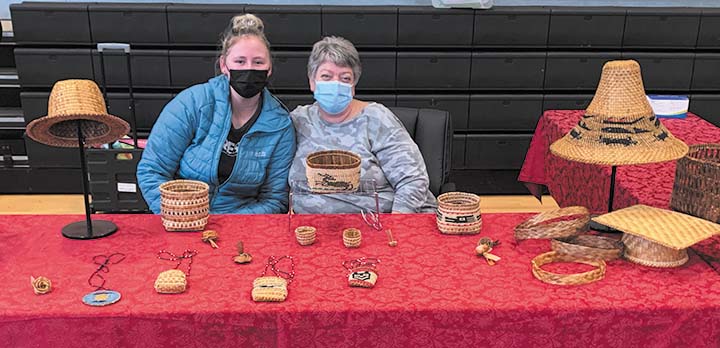
The Native Bazaar will be taking place one last time before the end of the year, December 3-5 from 9:00 a.m. – 4:00 p.m. at the Don Hatch Jr. Youth Center. The same vendors will be attending, but expect new things!
Unfortunately, at this time, the space is filled and cannot take anymore new vendors. If you would like to join the waitlist, or have any questions about the upcoming Bazaar, please contact Tammy Taylor at: 425-501-4141
MSD adopts very first Equity Plan

By Kalvin Valdillez, Tulalip News
“When I was growing up we did not see ourselves in school,” expressed Quil Ceda Tulalip Elementary Vice-Principal and Tulalip tribal member, Chelsea Craig. “We did not see our people, our way of being. We were expected to check who we were at the door of the school and conform to the colonized system that we were forced to participate in. This policy is the beginning stages of changing that practice. It honors the unique and beautiful communities that each of our students come from. It puts the heavy lifting on the adults to change their practice and their thinking to meet the needs of all of our kids. It interrupts the status quo, that has long-standing shown, does not work for our Native students and other students of color.”
For the first time in history, the Marysville School District (MSD) has adopted an equity policy in an effort to ensure that their students, faculty and families feel safe and supported through their academic careers and time spent within the school district. November 3 marked an important and historic day, as the district took the first step in a long journey. A journey worth striving for where kids can thrive in a comfortable learning environment and simply be themselves without worrying about bullying, harassment, or experiencing educational disparities and barriers based on their culture, ethnicity, religion, gender identity, sexual orientation or socioeconomic status.
Said Eneille Nelson, MSD Executive Director of Equity and Family Engagement, “This educational equity policy was created by students, parents, community members and staff. It was very important to have the right people at the table thinking about the needs of our students, families and staff of our district. It will serve as the foundation to initiate the necessary sustainable changes for years to come. The policy is just the beginning of the work we have to do, a foundation for us to build upon.”
Over numerous pages, the policy identifies five key areas that MSD will focus on to implement the Equity Action Plan; Human Resources, Teaching and Learning, Leadership and Partnership, Climate and Culture, and Responsibility/Accountability.
If executed as planned, the district will recruit and hire a more diverse workforce, whom students can identify with, relate to and confide in. Eliminate systemic inequalities in curriculums and educational materials by providing their staff with professional development training and tailoring lessons so their students can see themselves within the curriculum. Build and foster strong relationships with their students, families and local communities, namely the Tulalip Tribes, City of Marysville and Snohomish County, to ensure they have input in major decisions and that their voice is heard and well-represented. Offer a safe and inclusive learning environment where the proper resources are readily available to their students. And hold staff, the school board and the yet-to-be-appointed superintendent accountable by closely monitoring the progress of the policy through annual reports, reviews and surveys – to name a few highlights from the newly established policy.
“The Marysville School District has never had an equity policy before and we have seen the painful effects on our kids and our community,” stated Liz Gobin, MSD teacher and Tulalip tribal spouse and parent. “Having a comprehensive equity policy holds everyone in the district accountable to ensure that our kids feel safe and that the biases that have existed in the larger community and educational systems will no longer be tolerated. There have been many feel-good statements about equity over the years but having a formal policy adopted means that there is finally action happening. Along with this initial policy, the advisory teams are continuing to develop the action steps that go along with it, including things like professional development to educate staff, more diverse hiring practices, evaluating discipline data, and holding every person accountable to interrupt racism and biases as they occur.”
She continued, “This Equity policy was created for and belongs to each of our children. I want to encourage every family to use their voice to make sure we keep building on this policy and that we never go backward. As our school board changes and our superintendent search begins, it’s important to remember that what we demand as parents and as a community makes a difference. We need to pay close attention to what is happening and work together to make sure this policy stays at the forefront of all of the work happening in the district.”
As Liz mentioned, MSD is currently undergoing several changes as the school board welcomes three new directors to the five-seat panel, two of whom have shown opposition to curriculum such as Critical Race Theory and have vocalized they would not support any curriculum that places value on any race, gender or national origin above another. That is why she is urging other parents to get involved as the new policy goes into effect, to ensure that the equity policy is implemented as planned and the needs of MSD students and families hailing from various backgrounds are met. And that their students are also afforded a safe and positive learning environment, as well as celebrated for their differences.
Chelsea shared, “At QCT we have been working for many years to change the mindset of school, grounded in the traditional values of the Tulalip Tribes. We have been working to build our understanding of race and equity and the role each of us play in creating a learning environment that reflects the community we serve, that honors the beauty that each of our children bring into a very colonized space. MSD passing this policy grounds the much-needed work to heal our Tulalip/Marysville community.”
Eneille added, “Our next steps will be to create an action plan that will put actions to the areas addressed in our policy. Everyone in our district and community have a part to play in the success of our policy and action plan. We all have to hold each other accountable and not expect one person or group to do all of the heavy lifting. If we work together, this policy and action plan can bring the change many have been waiting and hoping for.”
To view the MSD Eduction Equity Policy please visit: https://drive.google.com/file/d/1yb3sRKRNQOil-Afud66Qxq9HXqW27zQu/view
The district’s current Equity Action Plan can be found at: https://core-docs.s3.amazonaws.com/documents/asset/uploaded_file/1312201/MSD_Equity_Action_Plan_Web_Version.pdf
For additional information, please contact the Marysville School District at (360) 965-0000.
November 13, 2021 syəcəb
60 years of commitment
Pete and Sherry Guzman share advice for a long and healthy marriage
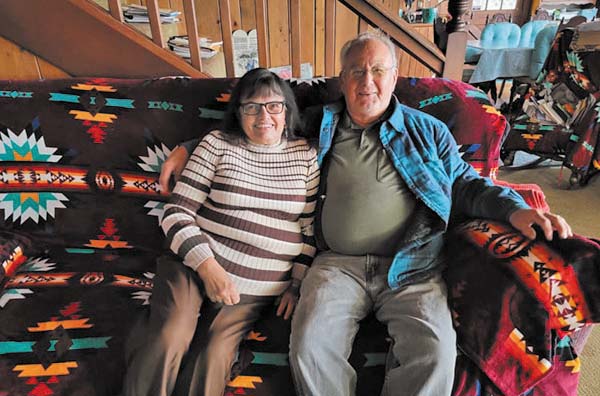
By Niki Cleary, Tulalip News
As they celebrate their 60th anniversary, Pete and Sherry Guzman want to inspire young people to find and keep a love like theirs. Sherry was a teenager and Pete in his early 20’s when they married. Together they’ve raised 7 children, 35 grandchildren and they have 68 grandchildren with more on the way.
When asked to share the secret to their success, Sherry teased, “He picked a good woman.” She followed it by saying she picked an equally good man. As they reminisced about their many years together they emphasized that it’s important to love, respect and care for each other.
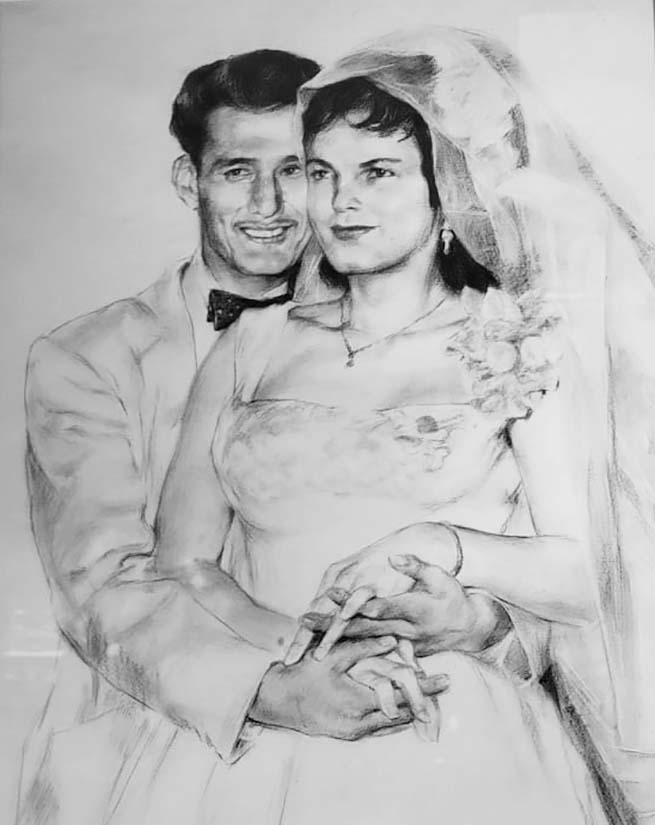
Sherry said they’ve always supported one another. Her asthma means vacuuming is difficult for her, but she happily does the bookkeeping for their trucking company.
“I do the vacuuming for her and I don’t mind doing it,” Pete explained. “You have to work together. If either side isn’t, then it won’t work. You have to pay attention to your wife,” Pete continued, “I want young couples to know, and I failed at this while we were young, but if you do this your relationship will be a lot better. Listen, and never go to bed angry. Talk things out.
“Always do something nice for them, “Pete pointed to the many Native American dolls decorating their home, his wife’s prized collection. “You have to have closeness, you have to pay attention to her as much as you can. If you go someplace and she doesn’t go, always bring something home for her. Show that you care and be loving. Whenever I go someplace, I look for these Indian dolls for her.”
Sherry smiled, “He kind of spoiled me.”
Pete reminisced about shopping with Sherry and always checking in about their household. “Another thing we do, we never buy anything without talking it over. We’ve done that since we got married.”
Sherry talked about the importance of their spirituality as well. In addition to their marriage, the two were sealed by the church in 1982, a practice that connects them during life and after.
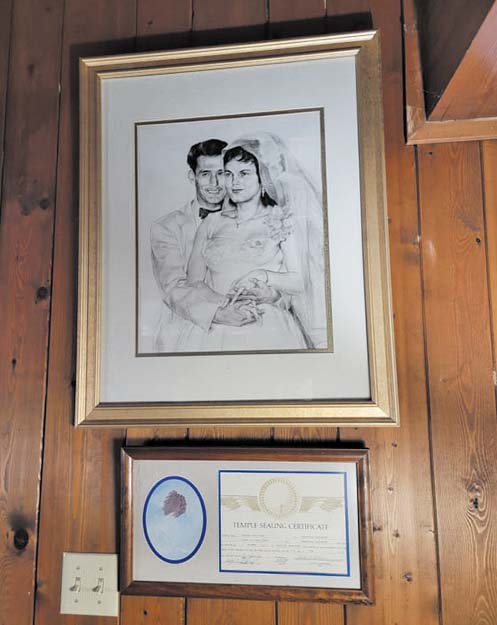
“Lately, we read scriptures together and pray every morning and every night. That helps us,” she said. Family and faith are priorities Sherry explained.
“We’re so proud of our kids and grandkids,” she said. Her advice for others hoping to have as long a marriage, “Put God in your life. I want people to stay committed and keep trying and keep showing each other the love that you feel.”
Auntie Valda’s 1st Annual Winter Clothing Drive
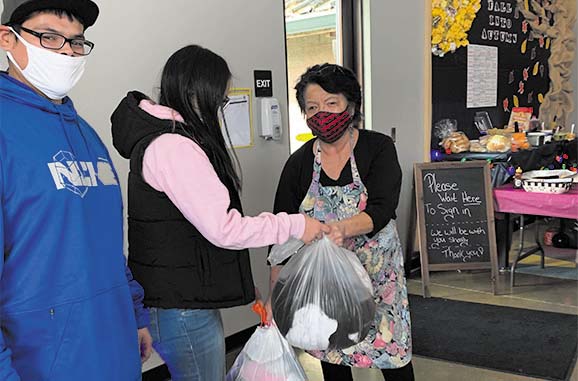
By Shaelyn Hood, Tulalip News
Valda Gobin is a Tulalip Elder who has worked tirelessly to help those less fortunate. For most of her career, she has worked for the Tribe, but what most people know her for are her personal endeavors and efforts to collect clothing, personal items, cleaning products, etc., for people who are struggling within and outside of the Tulalip community.
Even though Valda has been doing this type of work continuously throughout years, this was the first event that she has put on in hopes of preparing warm items for the winter.
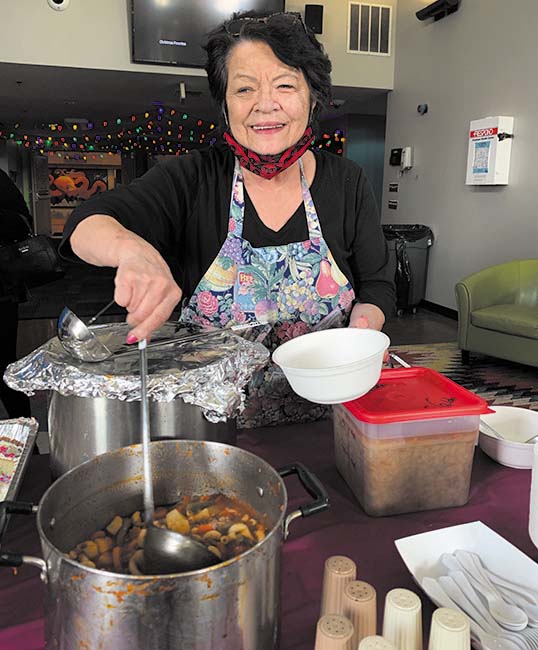
The clothing drive continues through November 10, with donation drop-off locations at the Don Hatch Youth Center, 6700 Totem Rd., and at Homework Support, 7707 36th Ave NW Building F. New or gently used items like jackets, gloves, hats & scarves, boots, handwarmers, ponchos, socks, wipes/toiletries, blankets, and coat hangers are greatly appreciated. Outside of any physical items, monetary donations are also accepted.
With the help of the Tulalip Education Division, Valda is able to cook and serve food to people who come to support and make donations.
Valda’s passion stems from her mother, Winona “Nonie” Mable Parks Cooper. Often, Nonie would tell her kids to collect money, and food to give to those on the street. It was because of her mother, that Valda continues to help others, “It makes me feel good. People make bad choices, but that doesn’t make them bad people. We just help people that need help.”
In her efforts to help people, she also tries to connect people to the recovery programs, and assistance programs that Tulalip offers.
Shana Simpson has recently joined Valda to help collect, wash, and prepare clothing items for donation. They work with the Community Donation Program at the Tulalip Elementary School.
So far, the event has already been so successful in filling the bins at the drop-off sites. However, Valda and Shana will continue to accept donations throughout the year. If you would like to donate, or you are someone who is struggling, please contact Valda at: 4258704214, or Shana at: 3609131199.
Hundreds of Families turn out for Trunk or Treat 2021
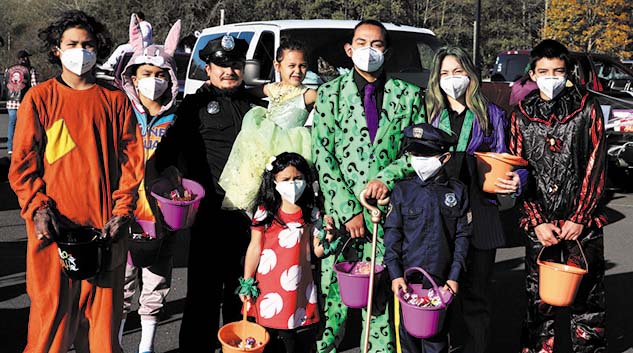
By Kalvin Valdillez, Tulalip News
A steady line of cars extended through the Tulalip reservation on the afternoon of October 31, beginning along Marine Drive and ending at the Tulalip Gathering Hall parking lot. Patiently waiting in each vehicle were little princesses, superheroes, beloved cartoon and movie characters as well as a number of scary villains and frightening monsters – all of whom were ecstatic to receive candy and check out all the creepy and creative decorations at the annual Tulalip Trunk or Treat community celebration.

Hosted by the local volunteer group, Together We’re Better, the Halloween-themed event has brought smiles to the kids and families of Tulalip for nearly a decade.
“This is our ninth Trunk or Treat,” exclaimed Together We’re Better Founder, Malory Simpson. “Our first Trunk or Treat was at the admin building. And then we added a potluck, we had mass foods and crafts, and lots of things for the kids to do. But with COVID, we had to do a drive-thru style this year and last year.”
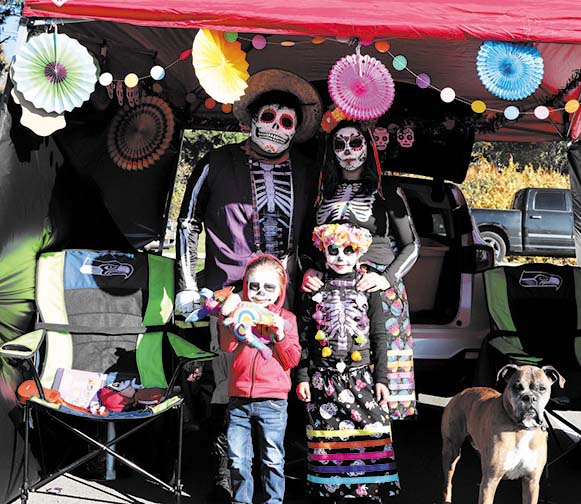
As you may know, Halloween is quite the spooktacular holiday amongst Tulalip citizens. In addition to Trunk or Treat, there are usually multiple community and tribal department events that take place during the season. However, with the delta variant still on the rise, most of those celebrations were canceled for the second year in a row, which has contributed to more volunteers and participants during the yearly Trunk or Treat festivities.
This year, Together We’re Better collaborated on the popular event with the Tulalip Tribes. Many tribal departments and local organizations spent the holiday with the community including the Tulalip Police and Fire Departments, Tulalip Remedy and the Tulalip Lions Club. And as always, the Sacred Riders and other surrounding motorcycle clubs joined in on the fun.
Said Malory, “We have our regulars, like the Sacred Riders, they’ve been coming for years. That’s one of my favorite things about Trunk or Treat is when you hear the bikes come in. I’ve had steady people volunteer over the years and have lots of new people always coming in. The amount of Trunk or Treaters has definitely grown. I think word got through to the surrounding communities, and that’s what Together we’re Better is about, bringing the community together and that’s both Tulalip and Marysville. Seeing the different faces and our members of Tulalip coming through is pretty awesome.”
She continued, “Last year, the Tribe donated candy, this year, they donated the buckets and lots and lots of candy. It is also the first year that the staff has been involved with the collaboration, I think we have the CEO staff, custodial and public works lending a hand today.”
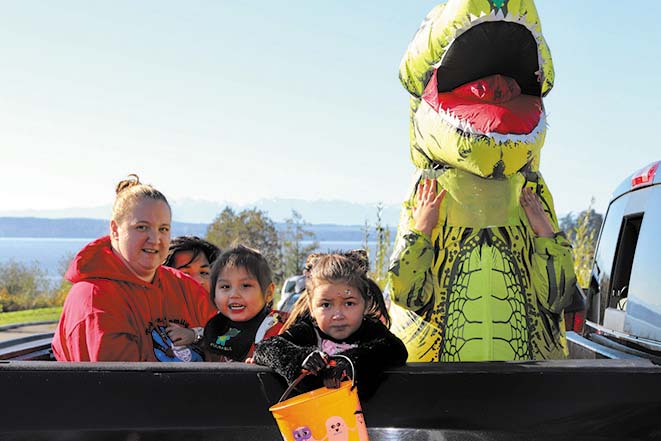
By altering Trunk or Treat to a drive-thru celebration, Together We’re Better found a way to provide a safe and fun Halloween event where kids can still show off their costumes while collecting sugary snacks, just like the good-ol’-days before the world-wide pandemic. By the end of the three-hour event, hundreds of kids left the drive-thru with buckets overflowing with candy as well as several fun and healthy items such as books and toothbrushes.

“Being able to do something for the community is very fulfilling,” expressed Together We’re Better volunteer, Natosha Gobin. “It was nice to gather with everybody and see the decorations and the excitement on the kids and parents faces when they drove thru. Everybody came together and did this for the kids, and that’s really powerful.”

If you are looking to get more involved with the community, Together We’re Better, is always accepting donations, whether that is goods, money or your personal volunteered time. For more information, please contact Malory Simpson at (425) 905-9137.
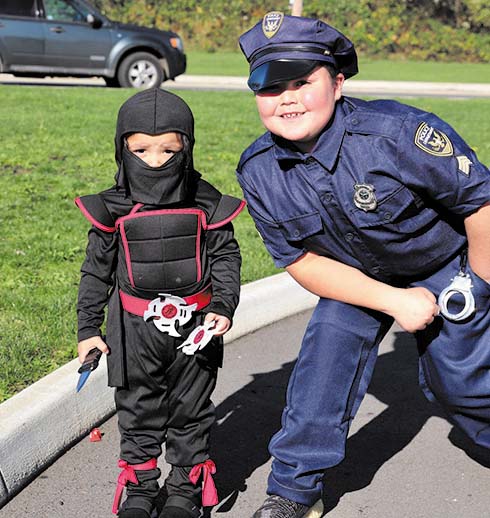
November 6, 2021 syəcəb
The legacy of naming Army helicopters after Native Americans
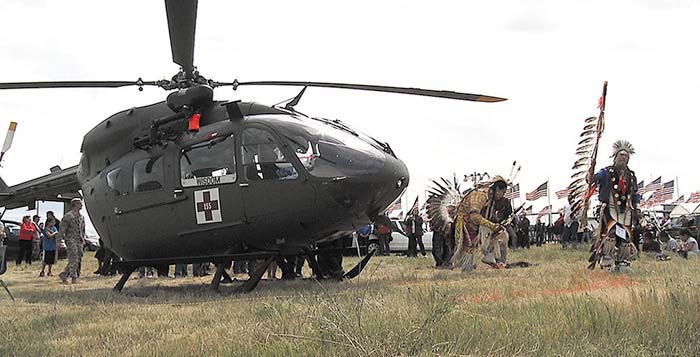
By Micheal Rios, Tulalip News; Photos courtesy U.S. Department of Defense
It’s officially Native American Heritage Month. November’s been federally recognized as such since 1990, when then President George Bush approved a joint resolution making it so. Bringing it local, just days ago Washington State Governor Jay Inslee proclaimed November 2021 as Native American Heritage Month as well.
In his proclamation, Governor Inslee stated Washington joins other states across the nation in celebrating Native American Heritage Month, honoring the unique heritage of this continent’s First People and reaffirming the commitment to respect each Tribe’s sovereignty and cultural identity.
With November 11 being Veteran’s Day, it’s a timely occasion to drop some knowledge about a not so well-known tactic in which the United States Army honors the unique heritage and cultural identity of Native Americans.
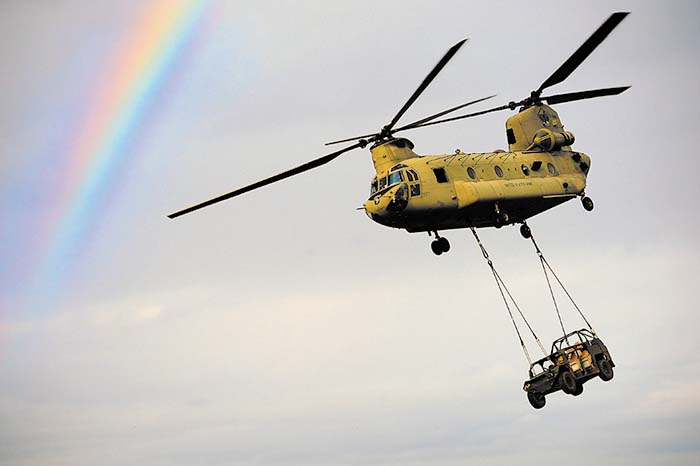
Lest we forget, as a cultural demographic Native Americans serve in the armed forces at five times the national average and enlist in the military at the highest per-capita rate of any other group. The Department of Defense recognizes that today’s military successes depend heavily on the contribution of America’s First People. Thirty-one thousand proud Native American men and women are on active duty today, serving in Iraq, Afghanistan, and elsewhere around the world.
This proud warrior tradition of Native people is recognized by the Army and manifests itself in a largely unknown and truly unique manner. Public affairs specialist and Defense.Gov author Katie Lange explains that for the past half-century Army helicopters have been named after the spirit, endurance, and warrior ethos of Native Americans.
Apache. Black Hawk. Comanche. Chinook. Kiowa. Lakota. In addition to being Native American tribes or key Native figures, these are also names of highly specialized, military aircraft. Wonder why?
The U.S. military has a long history with Native Americans. Armed conflicts between the two were commonly known as the American Indian Wars and were fought intermittently from the start of colonization and continued into the early 20th century. But Native Americans also served as some of the fiercest fighters for the United States for more than 200 years. In fact, 32 Native Americans have earned the nation’s highest military award, the Medal of Honor.
The tradition of naming helicopters after Native Americans was once an official regulation. That regulation no longer stands, but the tradition continues.
Here’s how it all came about. According to an unnamed Army museum official, the naming convention goes back to before the Air Force split from the Army in 1947, when Army General Hamilton Howze was assigned to Army aviation. His mission was to develop doctrine and the way forward when it came to employing Army aircraft and how they would support warfighters on the ground.
According to the museum official, Howze wasn’t a fan of the names of the first two helicopters – Hoverfly and Dragonfly. So, he laid out instructions for naming the helicopters after their abilities.
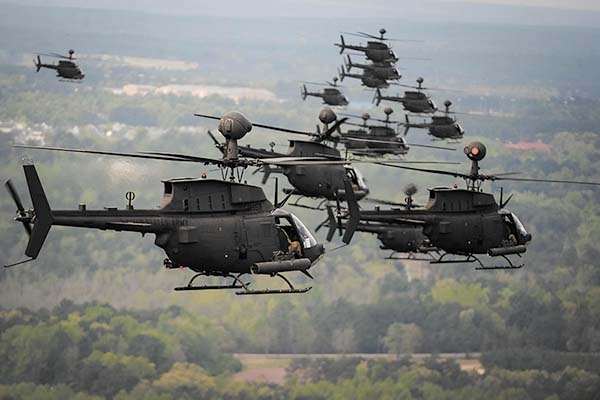
Howze said since the choppers were fast and agile, they would attack enemy flanks and fade away, similar to the way the tribes on the Great Plains fought during the aforementioned American Indian Wars. He decided the next helicopter produced – the well-known H-13 of “M.A.S.H.” fame – would be called the Sioux in honor of the Native Americans who fought Army soldiers in the Sioux Wars and defeated the 7th Calvary Regiment at the Battle of Little Bighorn.
That’s likely how Army Regulation 70-28 was created in 1969. The regulation listed criteria on how popular names would be given to major items of equipment. Name choices had to:
- Appeal to the imagination without sacrificing dignity.
- Suggest an aggressive spirit and confidence in the item’s capabilities.
- Reflect the item’s characteristics including mobility, agility, flexibility, firepower and endurance.
- Be based on tactical application, not source or method of manufacture.
- Be associated with the preceding qualities and criteria if a person’s name is proposed.
According to AR 70-28, Army aircraft were specifically categorized as requiring “Indian terms and names of American Indian tribes and chiefs.” Names to choose from were provided by the Bureau of Indian Affairs.
AR 70-28 was eventually rescinded and replaced with policies that didn’t mention that criteria, but it’s clear that the tradition has continued. You only have to look back to 2012 when the Army named its current primary training helicopter, the UH-72A Lakota, after the Lakota tribe of the Great Sioux Nation in North and South Dakota.
On June 10, 2012, Lakota elders ritually blessed two new South Dakota Army National Guard UH-72A Lakotas at a traditional ceremony on the Standing Rock Reservation in North Dakota. Ceremonies like these happened often over the past several decades.

When presented with this history of naming Army helicopters after Native American Tribes and figures, the Tulalip Veterans Department issued the following statement:
It’s important for our citizens to know this great history because you really have to make a positive impact for any group, let alone the U.S. military, to create a regulation honoring you by name. This is a special recognition unique to the Native American’s fighting spirit. As Native Americans, we serve in the military at the highest rate per capita. That long-lasting tradition of protecting our families, homelands and cultural lifeways is honored by the Army’s desire to name their helicopters after us.
Disclaimer: “The appearance of U.S. Department of Defense (DoD) visual information does not imply or constitute DoD endorsement.”

